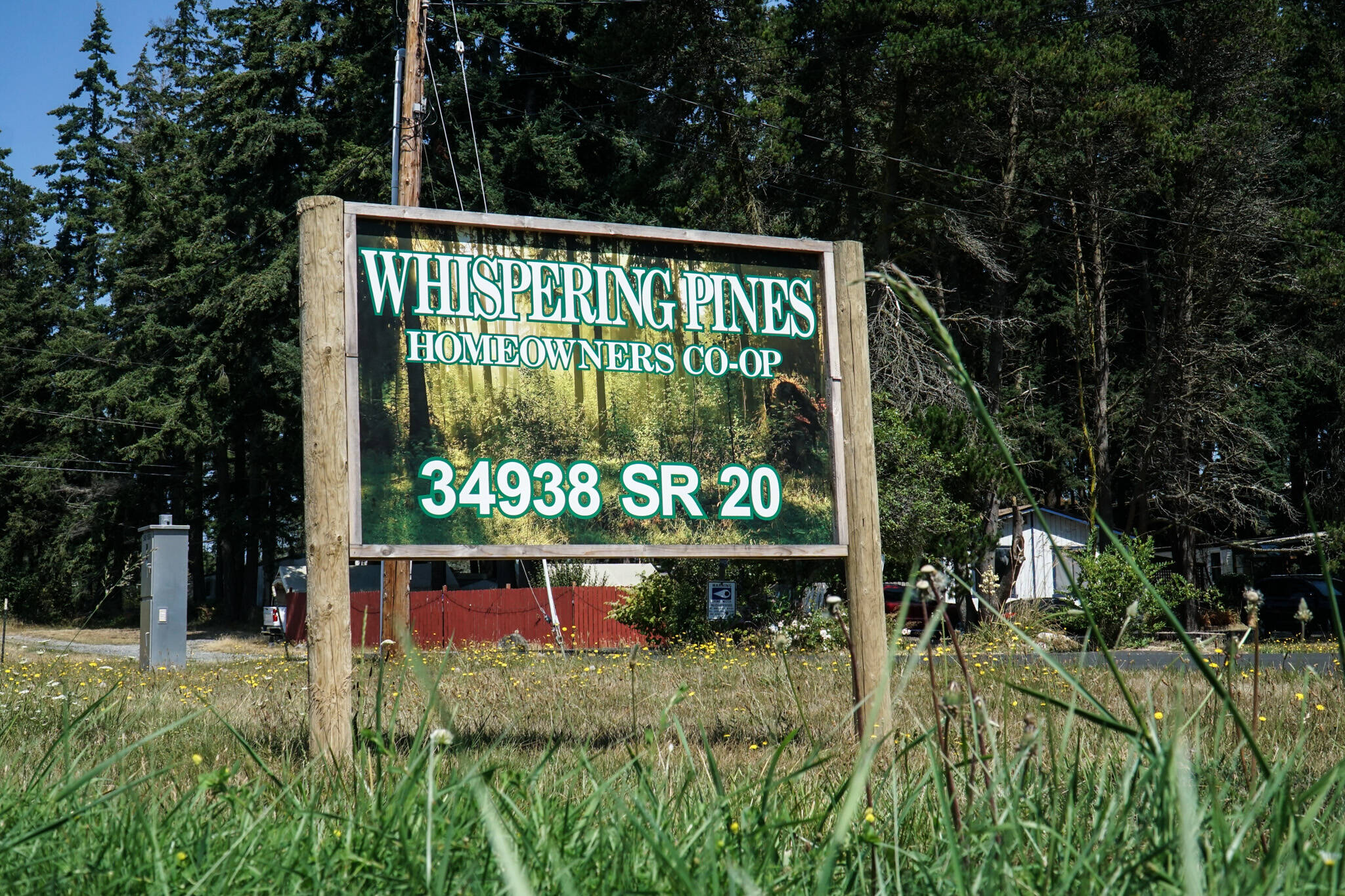Whispering Pines Cooperative, a 55-manufactured-home, resident-owned community on North Whidbey, has decided to pursue the state revolving fund to address its polyfluoroalkyl substance, or PFAS, contamination.
According to the state Department of Health, the Whispering Pines well tested positive for two PFAS chemicals — 5 parts per trillion of PFOS and 4.3 parts per trillion of PFOA. About four months ago, the Biden administration put a strict limit of 4 parts per trillion for both types of the so-called “forever chemicals” in drinking water, which may help communities on Whidbey limit their exposure.
When Whispering Pines staff took the original test, the state action level was — and still is — 15 parts per trillion for PFOS and 10 parts per trillion for PFOA. According to Robert Bonaccorso, resiliency and health security public information officer for the Department of Health, the state has two years to adopt the federal maximum contamination level. At that point it will adopt an effective date, meaning it likely will not be enforced until 2029.
The state revolving fund, a bipartisan infrastructure law, appropriates $1 billion over fiscal year 2022 to fiscal year 2026 to address emerging contaminates in wastewater, stormwater and nonpoint source pollution.
To receive this funding, Whispering Pines must report its contamination in the annual consumer confidence report, which is done by King Water, said Scott Hager, Whispering Pine’s operations manager.
Likely, between now and 2029, there will be even more options for communities like Whispering Pines, Bonaccorso said. Both the Department of Commerce and the Public Works Board have established funding for contaminated communities, and the Legislature has asked for a report from state agencies on a comprehensive PFAS funding package due in 2025.
The new package will give such communities options and time before 2029, when the federal maximum contamination level will be enforced on a state level. In the intermediate years, the Department of Health will work with communities resulting in PFAS contamination to hopefully avoid consequences, Bonaccorso said.
Right now, the primary options appear to be for such communities to consider consolidating to neighboring systems that aren’t contaminated, replacing the contaminated source or installing and operating treatment to remove PFAS, he said.
For Whispering Pines, there are no neighboring systems, Hager said. In the pumphouse, the community already treats the water with chlorine and tests it daily, so likely the best option would be establishing more advanced treatment methods in the next five years.
Treatment has its limitations, Bonaccorso said, as it will prevent human exposure to PFAS and keep the neighborhood under the maximum contamination level, but it will not eliminate the problem in the aquifer. Environmental cleanups are a larger issue addressed by the Department of Ecology.



